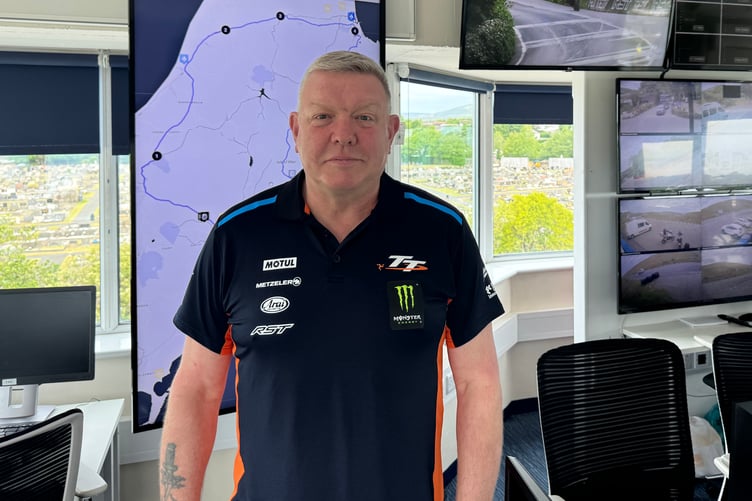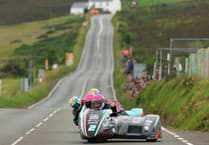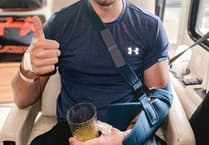Perched at the top of the TT Grandstand, Race Control looks out across the paddock and down Glencrutchery Road - but it’s what happens inside that makes it the true nerve centre of the TT.
It’s a room few see, but it plays a vital role in keeping riders, marshals, spectators, and officials safe during the world’s most demanding road races.
Clerk of the Course Gary Thompson, who oversees racing operations, explained how the state-of-the-art control tower works on practice and race days, and why the changes introduced in 2022 have transformed the way the TT operates.
‘About two, two and a half hours before roads close, everything starts here in Race Control,’ Gary said.
‘I sit beside the infamous laptop, which I use to operate 41 digital flags across the course in the event of a red flag situation.
‘When I hit the button, those red flags light up simultaneously around the 37.73-mile circuit.’
To his left is Gary Hines, elite dispatch officer, who monitors radio alerts from marshals stationed across the island.
‘If a marshal pushes the orange button on their radio, it flags up an incident here.
‘Gary shouts ‘Incident!’ and the room falls silent.
‘We assess the situation: do we need to stop the race? Is it safe to continue? Is medical or air-med support needed?’

The room is divided into sectors, each with its own controller.
Elaine Brown monitors sectors 1–4 (startline to Ballacraine), Harry Barton covers Ballacraine to Ramsey Hairpin, and Chris Ward oversees the mountain section back to the Grandstand.
The system was completely overhauled in 2022 as part of a new Safety Management System (SMS), bringing greater structure, accountability and communication between the event’s many moving parts.
That year marked the first TT run under a new organisational framework introduced by the Department for Enterprise (as event promoter), ACU Events Ltd (as race organiser), and the ACU (as governing body).
The goal: clearer roles, better collaboration, and safer racing.
Every decision made in Race Control is logged by Pam Redmayne, the event’s logistician.
Course cars and travelling marshals are deployed by Roger Brown — but only after Gary gives authorisation.
A serious incident reporting officer from Crown Ltd, a team of former police officers, is also on hand to document events for insurers or coroners.
Adding further expertise is John Barton, a former TT competitor of 33 years, who now acts as both Deputy Clerk of the Course and safety officer.
The control room also houses the chief medical officer, representatives from fire, ambulance and police, a welfare officer for families, and staff from the event’s communications and retirement desks.
‘We’ve got two large screens displaying the course map and live tracker, so we know exactly where each competitor is,’ Gary said.
‘Thanks to new CCTV, onboard GPS, and helicopter feeds, I can now see far more than just the pit lane — which was all we used to have.’
On any given race or practice session, 23 people are in race control, each playing a crucial part in keeping the TT running smoothly — and safely.
As Gary puts it: ‘This place will be heaving with people very shortly… but it’s all part of managing the greatest road races on Earth.’
.jpeg?width=209&height=140&crop=209:145,smart&quality=75)

.jpeg?width=209&height=140&crop=209:145,smart&quality=75)
